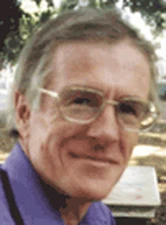Peter D. Killworth

The 2002 Fridtjof Nansen Medal is awarded to Peter D. Killworth for his many far-reaching contributions to theoretical oceanography which have significantly enlarged our understanding of the processes determining ocean circulation.
I currently have two positions: Im an Individual Merit Scientist here at SOC, but I also have a personal chair in the School of Ocean and Earth Science also at SOC. I did my undergraduate and graduate work in DAMTP, Cambridge, with a thesis on a variety (!) of ocean modelling topics courtesy of my supervisor Adrian Gill. I did a postdoc year at Scripps Institution of Oceanography working with Bruce Taft before returning to DAMTP where I worked until 1985 essentially as a very long-term postdoc, on successive NERC and then EC grants. I then moved to the nascent Robert Hooke Institute in Oxford as an employee of the Institute of Oceanographic Science, until the closure of that institute by NERC and the UK Met Office in 1995. I then moved to my present location. Ive been interested in (almost) all aspects of ocean modelling during my career, from detailed process understanding to the development of big ocean models. Ive worked on deep convection, baroclinic instability, effects of topography, lake dynamics, wave dynamics, inverse models, propagating features, sea ice, thermocline theory, the Antarctic Circumpolar Current, rotating hydraulics and flow through sills, western boundary currents, and data assimilation (to name a few).
In my spare time I have a second career in social networks, working on the physics that ties humans together, and with a small team in Florida have created a method in the last decade for estimating the sizes of hard-to-count populations via data on personal networks. Ive even worked on the six degrees of separation concept quantitatively, in the 1970-80s
